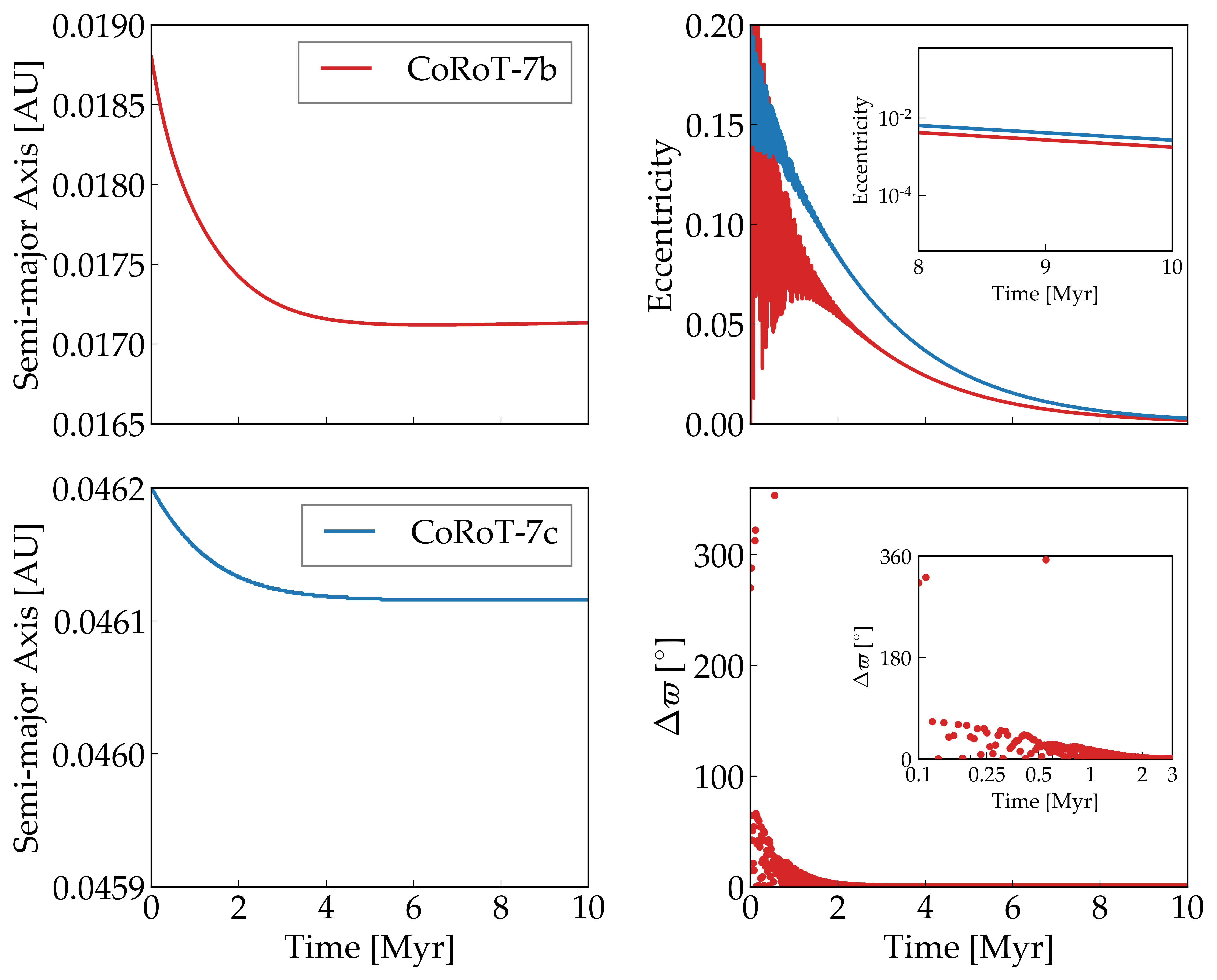Apsidal Locking of the CoRoT-7 System
Overview
Demonstration of apsidal locking, in which two planets’ major axes circulate with the same frequency after tidal damping.
Date |
9/12/18 |
Author |
David Fleming |
Modules |
DistOrb EqTide STELLAR |
Approx. runtime |
500 seconds |
In a planetary system consisting of two or more planets and in which at least one experiences damping, the orbits will evolve such that the eccentricity cycles stop and the major axes evolve in lock stop. This “fixed point solution” (Wu & Goldreich (2002) is reproduced below for the case of CoRoT-7 b and c as examined by Rodriguez et al. (2011), see their Figs. 2 and 3.
To run this example
python makeplot.py <pdf | png>
Expected output

Secular dynamical evolution of CoRoT-7 b and c subject to tidal damping as computed by EqTide and DistOrb based on Figures 2 and 3 from Rodriguez et al. (2011). Top left: Semi-major axis evolution of CoRoT-7 b. Top Right: Eccentricity evolution for both CoRoT-7 b and c. CoRoT-7 b’s eccentricity is initially excited by gravitational perturbations from CoRoT-7 c, but eventually damps towards 0 due to tidal forces. The inset shows the slightly non-zero eccentricities for planet b and c near the end of the simulation. Lower left: Semi-major axis evolution of CoRoT-7 c. Lower right: Difference between the longitudes of pericenter of CoRoT-7 b and c. In the inset, we display both planets becoming apsidally locked within 3 Myr due to tidal damping.